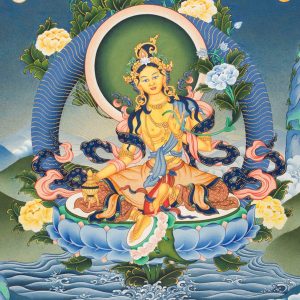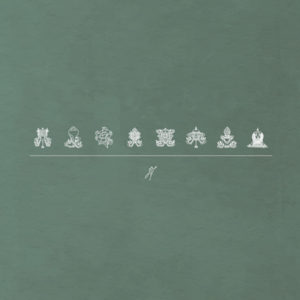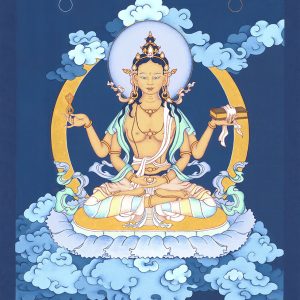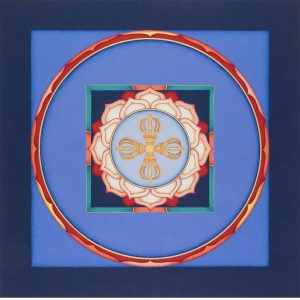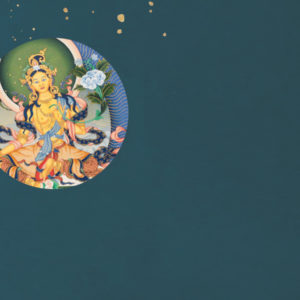Creating a Thangka is a traditional art form.
A Thangka is a representation of Buddhist subjects and is mainly used as a tool and guide for meditative and contemplative practice.
The word “Thangka” means something “that can be rolled up”. From Tibetan “Thang” and “ka” also means “message received”. There are various forms of Thangka, with different subjects whose various forms depending on the geographical region and lineage of origin. They can be painted or embroidered and are traditionally finished with a brocade frame. They can be found inside monasteries as well as in private homes.
A teaching, energy and quality is conveyed through the depicted subject: a Thangka contains many symbolic elements.
The symbol is a vehicle of meaning: it communicates what it expresses in a direct and intuitive way and helps to understand what it represents.

Thangka art


The realization of a Thangka is a long and complex process that involves several stages.
It starts with the preparation of the canvas on which to paint. Doing this process I use the traditional procedure: the fabric is pulled on a frame and treated with specific materials, such as gesso and glue, in order to obtain a support suitable for painting, smooth and elastic.
The subject, be it a Mandala, a Buddha or a deity, is not represented randomly. The drawing must respect some specific proportions indicated through a reference grid and must adhere to a specific iconography that provides a knowledge of symbology.
Some colors are also pre-determinated.
However, many elements, within a Thangka, depend of the artist’s free choice.
He proceeds through a particular sequence in the development of the painting, and different painting techniques are applied both for the application of color and for the shades and detailes.
In my works I use different materials, mainly minerals and natural pigments, sometimes gouache, while some of the details are painted with real gold.
The process requires patience, attention, concentration and mental presence: it is therefore for me a way to train these qualities and much more. Painting these images means to orient oneself to a deeper understanding. The images represent an enlightened nature that is always present and to which you can connect.
The use of reference proportions it might be thought that from the same grid the same drawing is always created. I have personally experienced that this is not the case. Proportions are an indication and a guide within which to move. The drawing doesn’t leave out from me as the artist, so the drawing takes shape also in relation to my feeling and to the inner state of the moment in which I create.
The realization of the work needs different phases and the work is constantly changing. This change, which also depends on the type of technique used, is always a source of wonder and amazement for me. It is an open dialogue, right to the end, with the work.
Through the specific sequence of execution the artist’s attention increases. Working gradually, from what is coarser to what is finer, concentration is stabilized and deepened to allow us to reach the beautiful and final step: working on the face of the deity that is defined as “opening the eyes of the deity”.
Only from that moment there is a look and it is incredible how to paint the eyes transform and give life to the whole work.
For me working with minerals and pigments requires an high concentration. Their preparation takes time. This type of color is certainly more complex to use for me, however, from my point of view, in the yield has a greater brilliance, depth and naturalness.
In addition, some minerals, from which the colors are obtained, were also used for curative purposes and in using them this aspect is very inspiring to me.
It’s really about dealing with a living material to which it is necessary to adapt flexibly from time to time and this, for me, is its beauty.
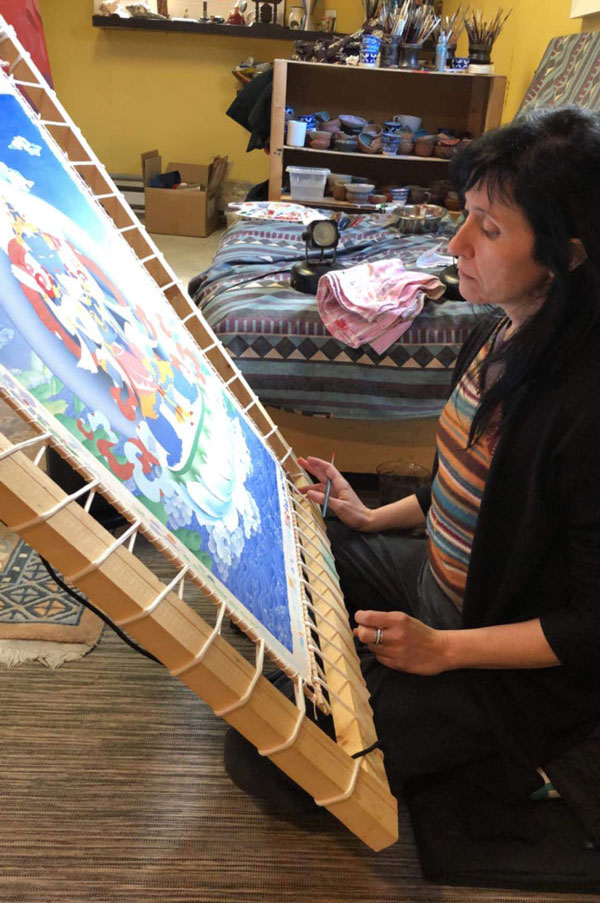
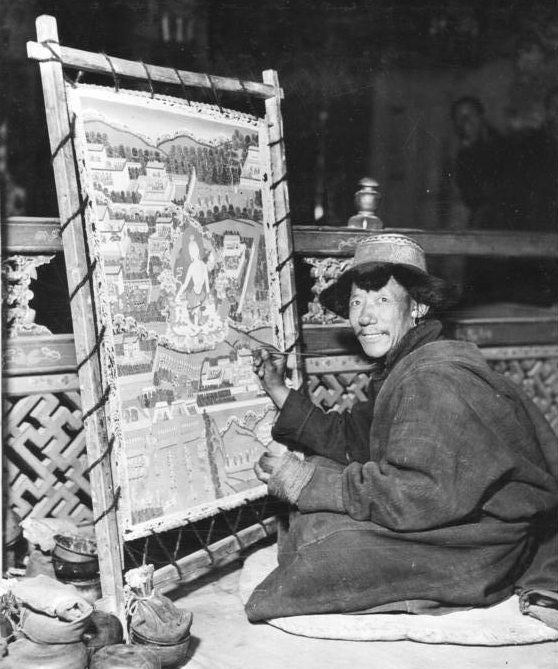
..the painted image of the Buddha originated in central India.
In Buddha’s time it was customary to exchange gifts like gems and precious objects among kings.
One day King Bimbisara decided to reciprocate King Utanaya by giving him something unique: an image of the Buddha painted on cloth.
After receiving the Buddha’s consent, the king commissioned some artists to do the work.
When they reached and saw the Buddha, they were so full of wonder that they were no longer able to portray him; the Buddha then led one of the artists to the shores of a clear lake and told him to reproduce his likeness by reflection in the water. The artist did so, surrounding the portrait with images of the twelve bonds of the dependent rising and with some words and religious advice, as recommended by the Buddha.
When King Utanaya saw the gift he was filled with gratitude and from that day on, through prayer and meditation he reached the path of correct vision.1
You can request a Thangka on commission with a particular subject of your choice or evaluate together which image is best suited to your environment or purpose. For any details and information about the processing, please contact me at the indicated contacts.


